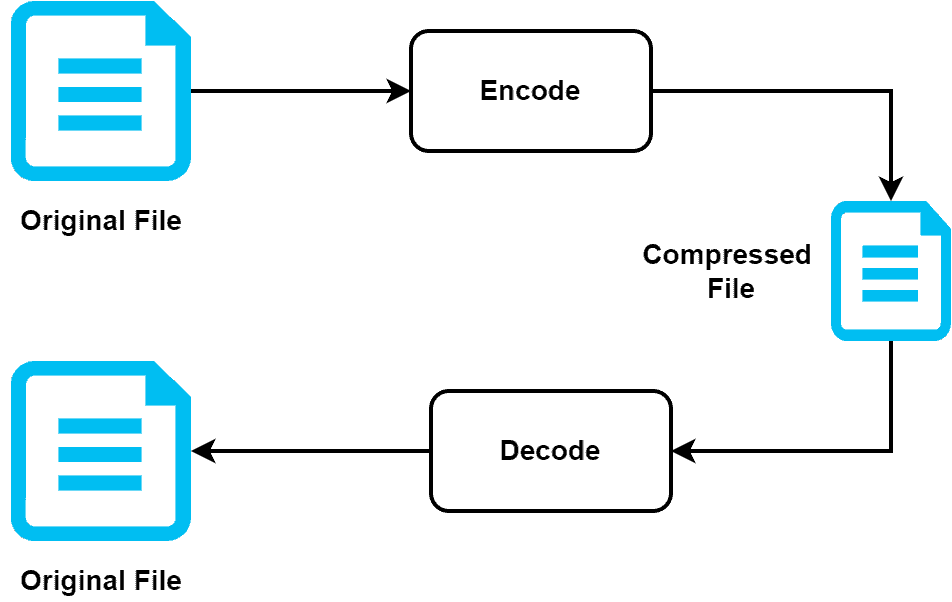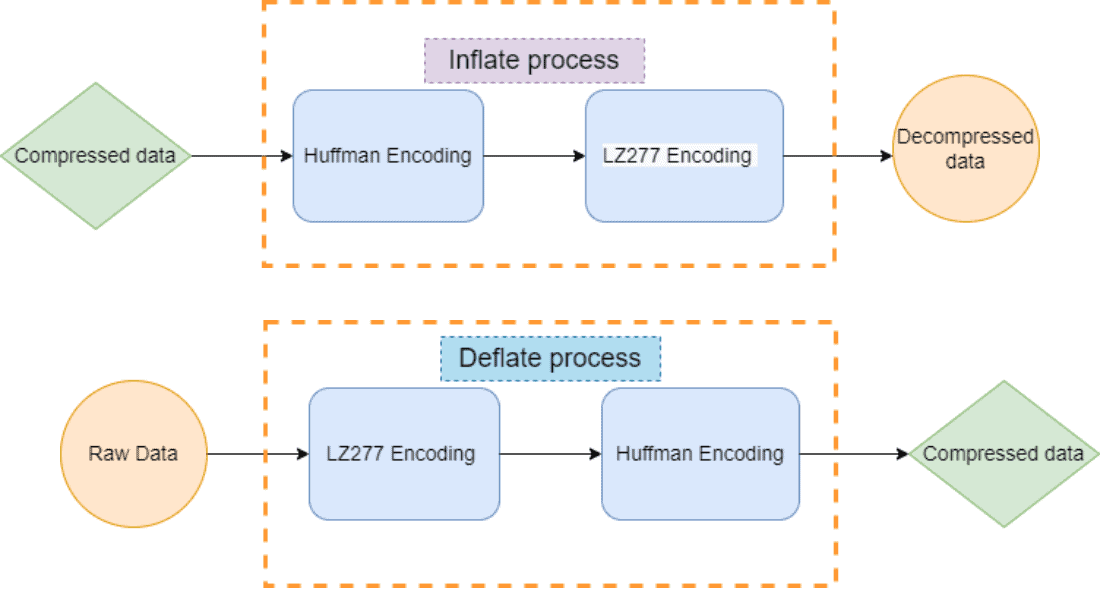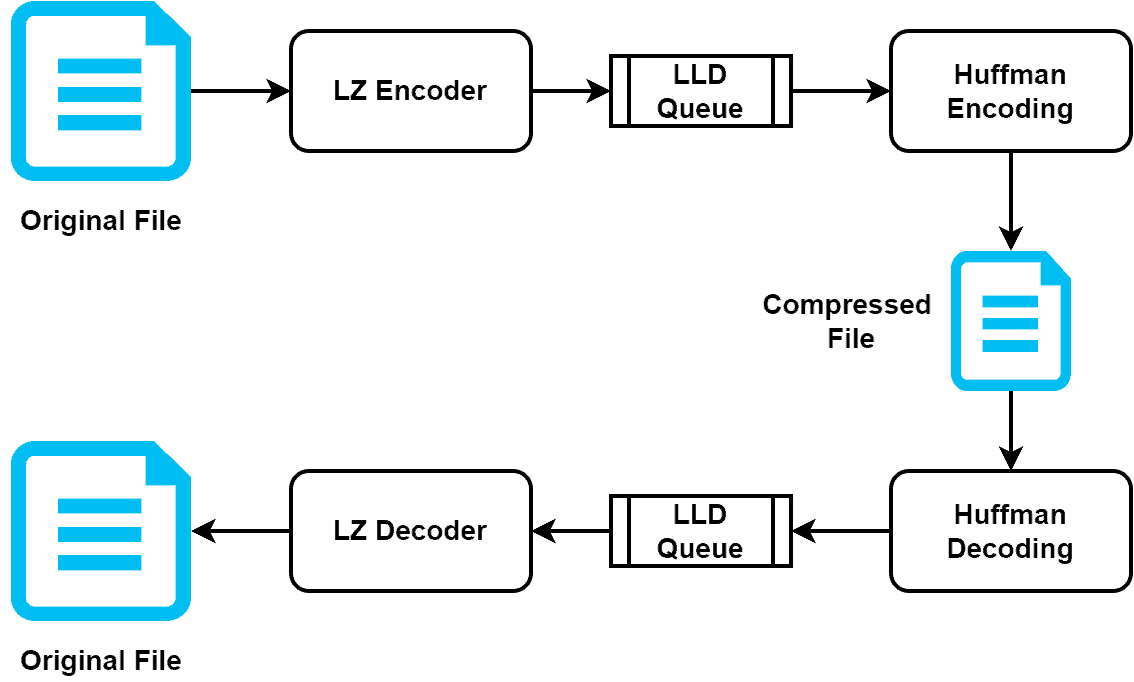1. 概述
在本文中,我们将深入探讨三种广泛使用的数据压缩技术:ZLib、GZip 和 ZIP,并对比它们的适用场景、优缺点以及技术实现。
2. 数据压缩简介
数据压缩是指通过特定算法减少文件体积的过程。压缩方法包括编码、结构重组、内容优化等。压缩的核心目标是在不丢失原始数据的前提下尽可能减小文件体积。压缩后的文件需要通过解码还原为原始内容:

早期互联网带宽有限,大文件传输困难,压缩技术应运而生。压缩算法大致分为两类:
- 有损压缩(Lossy):通过丢弃部分非关键信息实现高压缩率,适用于音视频等对精度要求不高的场景(如MP3、JPEG)
- 无损压缩(Lossless):保留所有原始信息,压缩率较低,适用于文本、代码、图片(如PNG、FLAC)
3. ZLib
ZLib 是一个开源的无损压缩库,生成 .zlib 格式文件。其压缩比通常在 2:1 到 5:1 之间,提供 10 个压缩等级(0 为无压缩,9 为最大压缩)。
ZLib 使用 Deflate 算法 压缩,Inflate 算法 解压,内部结合了 LZ77 和 Huffman 编码:
- LZ77:通过滑动窗口查找重复字符串
- Huffman 编码:根据字符频率构建最优二叉树,实现高效编码
压缩过程如下图所示:

⚠️ 缺点:ZLib 本身不包含校验机制,无法确保压缩数据的完整性。
4. GZip
GZip 是 Unix/Linux 系统中广泛使用的压缩工具,适用于单个文件压缩(如日志、HTML、CSS、JS 文件),也常用于 HTTP 压缩。其压缩比高、速度快,支持 .gz、.tgz 等格式。
GZip 也基于 Deflate 算法,但比 ZLib 更完整,包含更多元数据(如文件名、时间戳),并使用 CRC-32 校验确保数据完整性。
压缩过程如下图所示:

✅ 优点:
- 压缩率高
- 支持 HTTP 压缩,提升网站加载速度
❌ 缺点:
- 元数据多,增加 CPU 开销
- 不适合多文件打包(需配合 tar 使用)
5. ZIP
ZIP 是最常用的压缩格式之一,支持多个文件打包并压缩,生成 .zip 文件。ZIP 同样基于无损压缩,使用 CRC-32 校验,支持多种压缩算法(如 Deflate、Deflate64、bzip2、LZMA、WavPack),其中 Deflate 是默认算法。
压缩示意图如下:

✅ 优点:
- 支持多文件打包
- 跨平台兼容性好
- 支持密码保护
❌ 缺点:
- 对 MP3、JPEG 等已有压缩格式效果有限
- 压缩率低于 GZip
6. 对比总结
| 特性 | ZLib | GZip | ZIP |
|---|---|---|---|
| 是否压缩 | ✅ | ✅ | ✅ |
| 是否支持多文件 | ❌ | ❌ | ✅ |
| 是否有归档格式 | ❌ | ❌ | ✅ |
| 是否有校验机制 | ❌ | ✅(CRC-32) | ✅(CRC-32) |
| 压缩等级 | 10级 | 10级 | 10级 |
| 是否独立库 | ✅ | ❌(依赖 ZLib) | ❌(依赖 ZLib) |
| 适用场景 | 数据流压缩、HTTP | 单文件压缩、HTTP | 多文件打包、跨平台分发 |
7. 总结
本文系统介绍了 ZLib、GZip 和 ZIP 三种压缩技术的核心机制、适用场景及优缺点。它们各有千秋:
- ZLib:轻量级压缩库,适合嵌入式或底层数据压缩
- GZip:高性能单文件压缩,适合 Web 优化
- ZIP:通用性强,适合多文件打包和跨平台传输
选择合适的压缩方式,可以有效提升系统性能和用户体验。